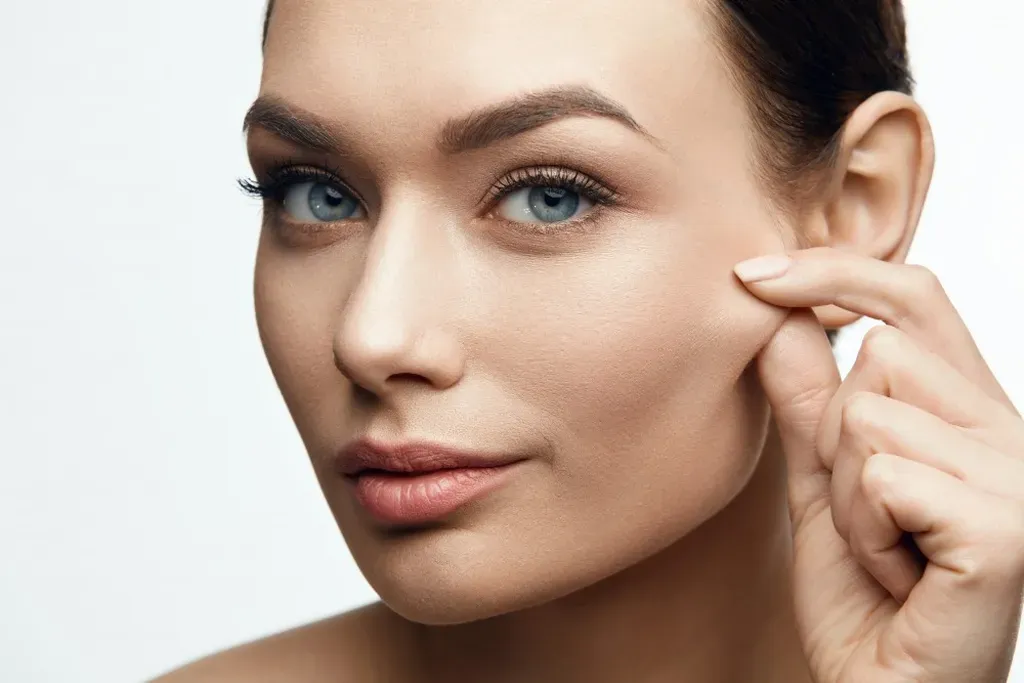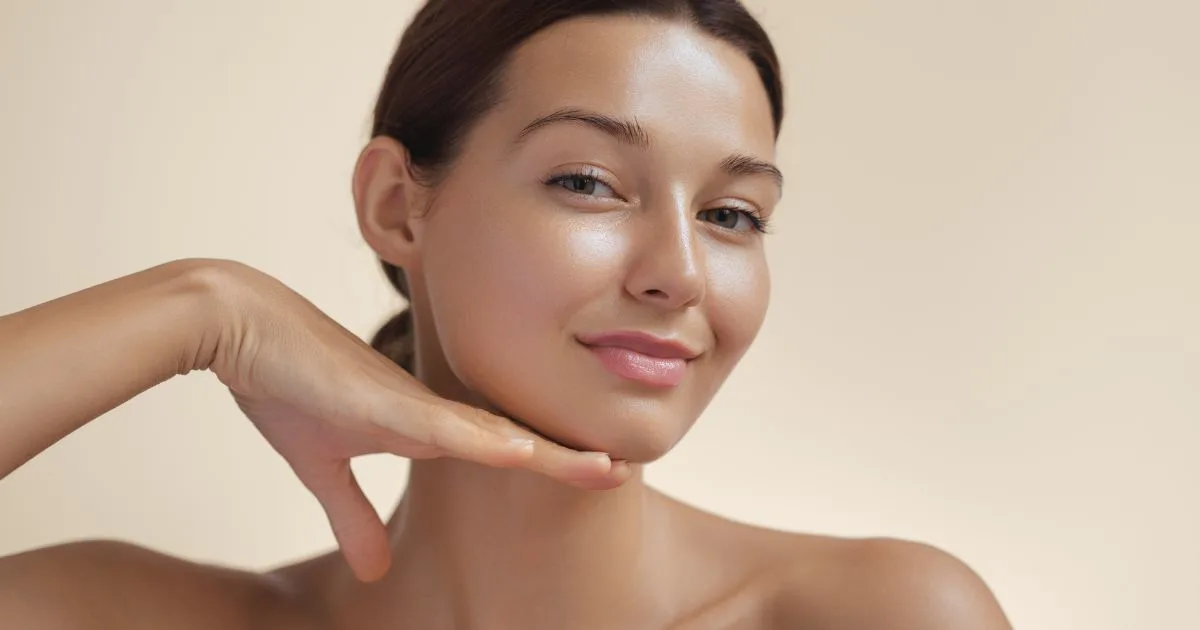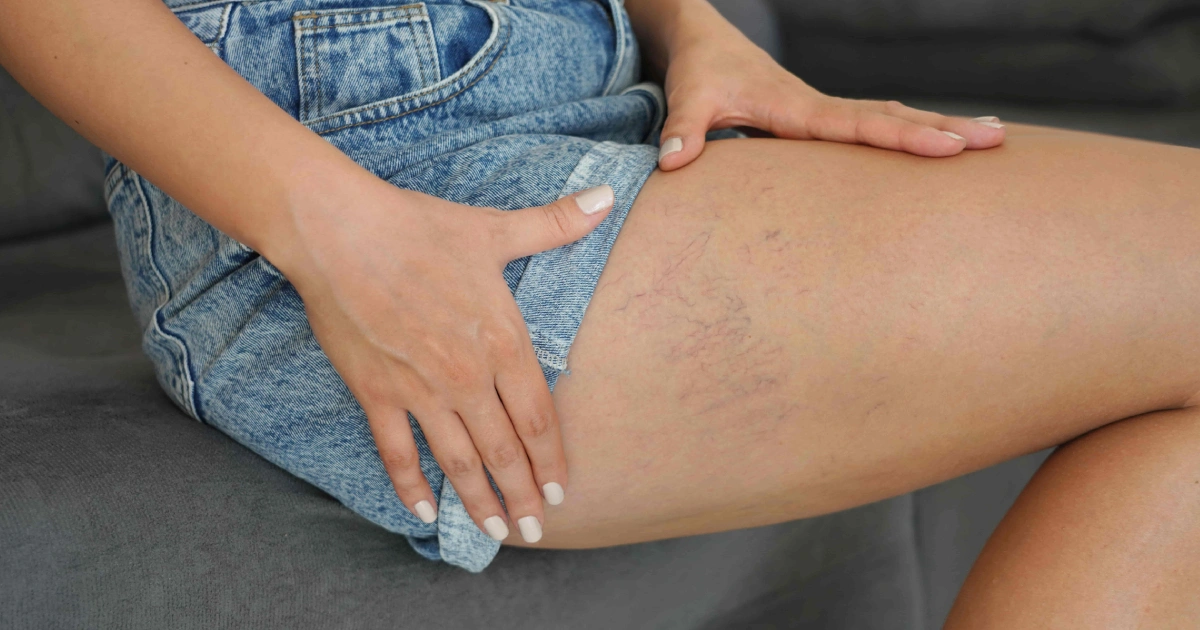Table of Contents
When it comes to vascular health, understanding the difference between spider and varicose veins is essential. Although both conditions involve visible veins, their appearance, causes, symptoms, and treatments differ. This blog post will explore these differences, clarifying how to recognize and manage these vein issues.
What Are Spider Veins?
Spider veins are small, thin blood vessels visible beneath the skin. They often appear as red, blue, or purple lines, forming patterns similar to spider webs or tree branches.
1. Causes of Spider Veins
The weakening of the valves within the veins primarily causes spider veins. These valves keep blood flowing in one position towards the heart. When they weaken, blood can pool in the veins, leading to the appearance of spider veins.
Hormonal changes, sun exposure, and prolonged standing (or sitting) can also affect the development of spider veins. They are most commonly found on the legs and face, making them a cosmetic concern for many individuals.
2. Common Symptoms of Spider Veins
Spider veins are usually painless, but some people might experience discomfort or a burning sensation around the affected area. They are more of a cosmetic issue rather than a medical concern, but treating them can improve one’s confidence and skin appearance.
3. Treatment Options for Spider Veins
Several approaches are available for spider veins, ranging from lifestyle changes to medical interventions. Among the most effective methods is spider vein laser treatment, which involves using targeted laser energy to collapse and seal the affected veins.
Laser treatment is particularly popular due to its precision and minimal invasiveness. Patients often seek this treatment for spider veins on their legs, as it provides excellent results with minimal downtime.
What Are Varicose Veins?
Varicose veins, unlike spider veins, are larger, swollen veins that often appear twisted and bulging. They can be blue, purple, or skin-colored, commonly found on the legs and feet.
1. Causes of Varicose Veins
Varicose veins typically develop due to malfunctioning vein valves. When these valves fail, blood begins to pool, causing the veins to enlarge. Varicose veins are often a result of prolonged standing, obesity, pregnancy, and age-related wear and tear on the vein walls.
Genetics also play a significant role, meaning that if your parents had varicose veins, you are more likely to develop them.
2. Common Symptoms of Varicose Veins
Varicose veins are not only unsightly but can also be uncomfortable. They may cause aching, heaviness in the legs, swelling, and even skin changes around the affected veins. In severe cases, if left untreated, varicose veins lead to skin ulcers, blood clots, and other complications.
3. Treatment Options for Varicose Veins
Varicose veins treatment can be done through various methods depending on the severity of the condition. Conservative approaches include lifestyle changes like regular exercise, weight management, and compression stockings to improve blood flow.
Medical procedures such as sclerotherapy, endovenous laser treatment, or surgery may be necessary for more advanced cases.
Endovenous laser treatment, in particular, has become a preferred method due to its effectiveness in collapsing and sealing problematic veins with minimal discomfort and recovery time.
Key Differences Between Spider Veins and Varicose Veins
Understanding the differences between spider and varicose veins can help you make informed decisions about their treatment options.
1. Appearance
Spider veins are small, thin, and often resemble a spider’s web or tree branches, whereas varicose veins are larger, swollen, and twisted. The color of spider veins tends to be red, blue, or purple, while varicose veins are typically blue, dark purple, or skin-colored.
2. Symptoms
While spider veins are usually asymptomatic, varicose veins often cause discomfort, including aching, heaviness, and swelling in the legs. This difference in symptoms is crucial in determining the urgency of seeking treatment.
3. Location
Both spider and varicose veins are commonly found on the legs, but spider veins can also appear on the face. Due to their size and the pressure they endure, varicose veins are generally confined to the legs and feet.
4. Health Risks
Spider veins are primarily cosmetic and do not pose significant health risks. However, if not managed properly, varicose veins can lead to serious complications, including ulcers, blood clots, and chronic venous insufficiency.
When to Seek Treatment
Recognizing when to seek treatment for spider or varicose veins is crucial for managing your vascular health.
When to Treat Spider Veins
If your spider veins are causing cosmetic concern or mild discomfort, it might be time to consider treatment options like laser treatment. This procedure is particularly effective for removing spider veins on the legs, and its results can significantly enhance your appearance and confidence.
When to Treat Varicose Veins
Varicose veins require treatment if they cause pain, swelling, or other complications. Consult a vascular specialist if you notice any signs associated with varicose veins, such as leg heaviness, persistent swelling, or skin changes. Early treatment can prevent more severe complications and improve your quality of life.
Spider Vein Laser Treatment: What to Expect
If you’ve decided to pursue spider vein laser treatment, knowing what to expect can help you prepare.
Before the Treatment
Before undergoing spider vein laser treatment, a thorough consultation with your healthcare provider will identify if you are a good candidate for the procedure. They will assess the extent of your spider veins and discuss the best laser for spider veins on your legs to achieve optimal results.
During the Treatment
The procedure is quick and involves directing laser energy onto the affected veins. The laser causes the veins to collapse and eventually be reabsorbed by the body. Most patients experience less discomfort during the treatment.
Aftercare and Recovery
After the therapy, you may experience mild redness or swelling in the treated area. It’s ideal to follow the aftercare instructions provided by your healthcare provider, which may include avoiding sun exposure and strenuous activities for a few days. Recovery is swift, and patients can resume normal activities within a day or two.
Final Thoughts
Understanding the differences between spider and varicose veins is key to managing your vascular health. While spider veins are often a cosmetic concern, varicose veins lead to more serious health issues if left untreated.
If you’re considering treatment for either condition, particularly spider vein laser treatment, it’s important to consult a specialist to explore the best options for your needs.
At MICARI Aesthetics & Veins, we offer evaluations and personalized treatment plans to help you achieve the best possible results. Book an appointment today and take the first step towards healthier, more beautiful legs.







